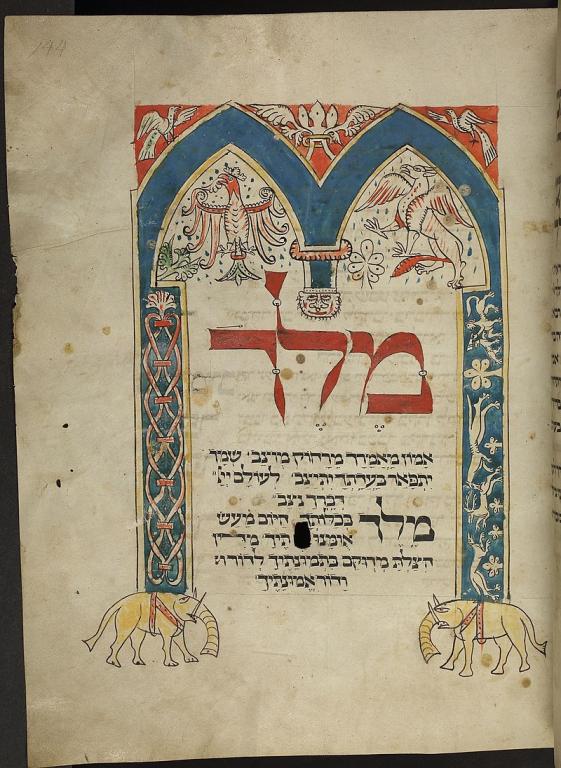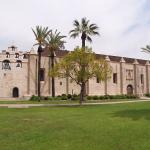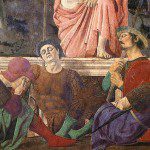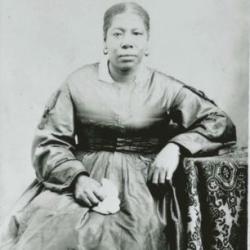
(Wikimedia Commons public domain image).
“Proper Names and Political Claims: Semitic Echoes as Foundations for Claims to the Nephite Throne,” written by Lyle H. Hamblin
Abstract: The Book of Mormon contains examples of phonemes in character names that resemble Semitic root words. The possible meanings of the names and their timing in the Book of Mormon narrative provide a deeper level of context to the Nephite political challenges in the books of Mosiah through 3 Nephi. Specifically, the English phonemes for the Hebrew and Arabic root-word for “king,” M-L-K, appear in character names in the Book of Mormon narrative when the people of Zarahemla, who were descended from Mulek, the last king of Judah, are discovered by the Nephites in the book of Omni. “King” names then appear frequently during the time in the narrative in which there are attempts to reestablish a monarchy during the early reign of the judges. “King” names disappear after “Moroni put an end to those king-men, that there were not any known by the appellation of king-men” (Alma 51:21, 62:9). The presence and timing of these “king” names suggests that the Mulekite claim to the local Israelite throne resonated rhetorically through Nephite politics for over a century and was violently contested in the multiple civil and external wars in the books of Alma through 3 Nephi.
“Interpreting Interpreter: Kingly Names; Kingly Ambitions,” written by Kyler Rasmussen
This post is a summary of the article “Proper Names and Political Claims: Semitic Echoes as Foundations for Claims to the Nephite Throne” by Lyle H. Hamblin in Volume 60 of Interpreter: A Journal of Latter-day Saint Faith and Scholarship. All of the Interpreting Interpreter articles may be seen at https://interpreterfoundation.org/category/summaries/. An introduction to the Interpreting Interpreter series is available at https://interpreterfoundation.org/interpreting-interpreter-on-abstracting-thought/.
The Takeaway: Hamblin identifies the names in the Book of Mormon that appear to be related to the root M-L-K—meaning “king” in Hebrew, Aramaic, and Arabic—outlining and cautioning against the often-monarchical ambitions of these figures, which begin with the appearance of the Mulekites and end with Moroni’s purge of the king-men.
Incidentally, the Interpreter website is so inactive, and the Interpreter Foundation so unproductive, that it’s really difficult for me not to fall behind in calling attention to the latest Interpreter developments. But I’m going to try to catch up today, now that I’m finally back home and trying to settle back into a productive routine. Accordingly, here are three additional recent items that I had not yet called to your notice:
Hugh Nibley Observed: “About the Portrait of Hugh Nibley,” by Rebecca Fechser Everett
Rebecca Fechser Everett says in Hugh Nibley Observed of her portrait of Hugh Nibley “I have enjoyed the whole process of creating this portrait from thought to finish. I’ve developed the piece to attempt to include as many images as I could associate with Brother Nibley and his life’s interests.”
Part of our book chapter reprint series, this article originally appeared in Hugh Nibley Observed, edited by Jeffrey M. Bradshaw, Shirley S. Ricks, and Stephen T. Whitlock. For more information, go to https://interpreterfoundation.org/books/hugh-nibley-observed/.
Ryan Dahle spoke about “Centralizing Scriptural Resources” at the Tracing Ancient Threads in the Book of Moses Conference on Saturday, 19 September 2020.
All of the conference presentations were filmed, and both video and audio recordings of each presentation are available. Videos, audio recordings and transcripts are available at https://interpreterfoundation.org/conferences/2020-book-of-moses-conference/papers/. The videos are also available on the Interpreter Foundation YouTube channel at https://www.youtube.com/c/theinterpreterfoundation. A YouTube playlist is also available at https://www.youtube.com/playlist?list=PLRMn4gyXMWLv7A618LA-cCvxMqWRk8kxI.
Interpreter Radio Show — February 18, 2024
For the 18 February 2024 episode of the Interpreter Radio Show, Bruce Webster and Robert Boylan and Kris Frederickson discussed Come, Follow Me Book of Mormon lesson 11, the recent article in Interpreter: A Journal of Latter-day Saint Faith and Scholarship by David M. Belnap and Nalini M. Nadkarni, naturalistic explanations of the Book of Mormon, and the Mountain Meadows Massacre.
Their conversation was recorded, and it has now been archived, freed from commercial interruptions, and made available online for your listening pleasure. The “New Testament in Context” portion of this show, for the Come, Follow Me Book of Mormon lesson 11, will also be posted separately on Tuesday, 5 March 2024.
The Interpreter Radio Show can be heard regularly on Sunday evenings from 7 to 9 PM (MDT), on K-TALK, AM 1640, or you can listen live on the Internet at ktalkmedia.com.
And have I mentioned this newly available Interpreter book?
Stephen D. Ricks and Jeffrey M. Bradshaw, eds. The Temple: Symbols, Sermons, and Settings
Proceedings of the Fourth Interpreter Matthew B. Brown Memorial Conference
“The Temple on Mount Zion,” 10 November 2018 (Temple on Mount Zion Series 5)
Someday, perhaps — and to the absolute astonishment of some of my critics — the Interpreter Foundation will produce something that isn’t mere name-calling and personal attacks intended to injure and wound others. I mean, it’s theoretically possible. Right?

In closing, I offer a trio of inflammatory entries from the Christopher Hitchens Memorial “How Religion Poisons Everything” File™:
- “Relief Amid Turmoil: Aid to Lebanon’s Displaced: A joint effort by the Church and URDA brings essential supplies to families in need”
- “Record Number of Giving Machine Donations to Bless the World: Millions will be fed, clothed and protected due to selfless donations made during the 2023 holiday season”
- “Service Stitched With Love: JustServe Volunteer Turns Wedding Gowns Into Tiny Angel Robes: Alabama Latter-day Saint Mary Helen Allred finds joy in using JustServe to continue a legacy of service” (This one hits home personally.)
Imagine a world in which there are no longer any religious people to commit such outrages. It’s easy, if you try. Imagine, above us, that there’s only sky. Imagine all the people living for today.
As the late Karl Marx (1818-1883) wrote in his 1843 Critique of Hegel’s Philosophy of Right:
Religious distress is at the same time the expression of real distress and the protest against real distress. Religion is the sigh of the oppressed creature, the heart of a heartless world, just as it is the spirit of a spiritless situation. It is the opium of the people. The abolition of religion as the illusory happiness of the people is required for their real happiness. The demand to give up the illusion about its condition is the demand to give up a condition which needs illusions.

















